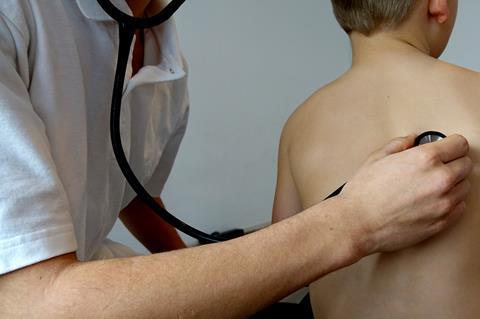Particular combinations of bacteria found in dust at day care facilities have been linked to wheezing in young children in a study presented at the European Respiratory Society International Congress in Milan, Italy. Wheezing in young children is often an early sign of asthma.

Children may spend many hours in day care each week and research suggests that conditions in day care settings can have an impact on respiratory health in early childhood. The new research offers some clues as to why attending day care can affect children’s lung health that could, in turn, point to measures for lowering the risk of asthma.
The study was presented by Dr Annabelle Bédard, a researcher at Inserm (the French National Institute of Health and Medical Research), Paris, France.
Microbes everywhere
She said: “We find mixtures of different bacteria and other microbes living everywhere – outside, inside our homes, on our skin and even inside our bodies. These communities of bacteria, known as microbiota, can have beneficial or harmful effects on our health.
“Young children will come into contact with the bacteria living in day care centres via their skin and mouths and by breathing them in. So, we might expect this exposure to have an impact on children’s developing lungs via the different microbiota that arise in children’s airway, gut or skin.”
The researchers used an adapted vacuum cleaner to collect samples of dust from the floor of 103 different day care settings in the Paris region. They used genetic analysis in the laboratory to identify the different types of bacteria found in each sample.
At the same time, they asked the parents of 515 children attending the day care facilities whether their children experienced any respiratory symptoms, such as wheezing. The children were around two years old on average.
Grouping bacteria
Based on the types of bacteria found in the samples, researchers were able to group mixtures of microbiota from the day care centres into four broad categories. One of these categories, in which two different bacteria called Streptococcus and Lactococcus were dominant, was linked with an increase in the risk of wheezing, compared with the more common category (a mixture of Streptococcus, Neisseria and Haemophilus bacteria).
Dr Bédard said: “In children under three years old, wheezing is considered to be an early sign of asthma. Our research suggests that there are differences in the risk of recurrent wheezing depending on mixtures of bacteria in the day care setting.
“We now need to understand what factors influence this bacterial community, for example how the rooms are cleaned and ventilated, and indoor air quality. This, along with future findings from other studies, could help understand how to improve conditions and inform public health strategies for preventing chronic respiratory diseases such as asthma in children.”
Asthma pathway
Dr Bédard and her colleagues will now explore these factors and how they influence dust microbiota and children’s respiratory health. They will also continue to study the children attending day care to see whether they go on to develop asthma in later childhood.
Professor Angela Zacharasiewicz, who is chair of the European Respiratory Society group on paediatric asthma and allergy and was not involved in the research, said: “There are bacteria and other microbes living all around us and we are starting to understand that they can have positive and negative effects on our respiratory health. We still have a great deal to learn about these complex communities and how our bodies respond to them.
“This study suggests a link between the respiratory health of the young children and the mixture of bacteria in their day care facilities. Hopefully, understanding more about these interactions will help us create the healthiest environments for our young children to grow and thrive.”







No comments yet